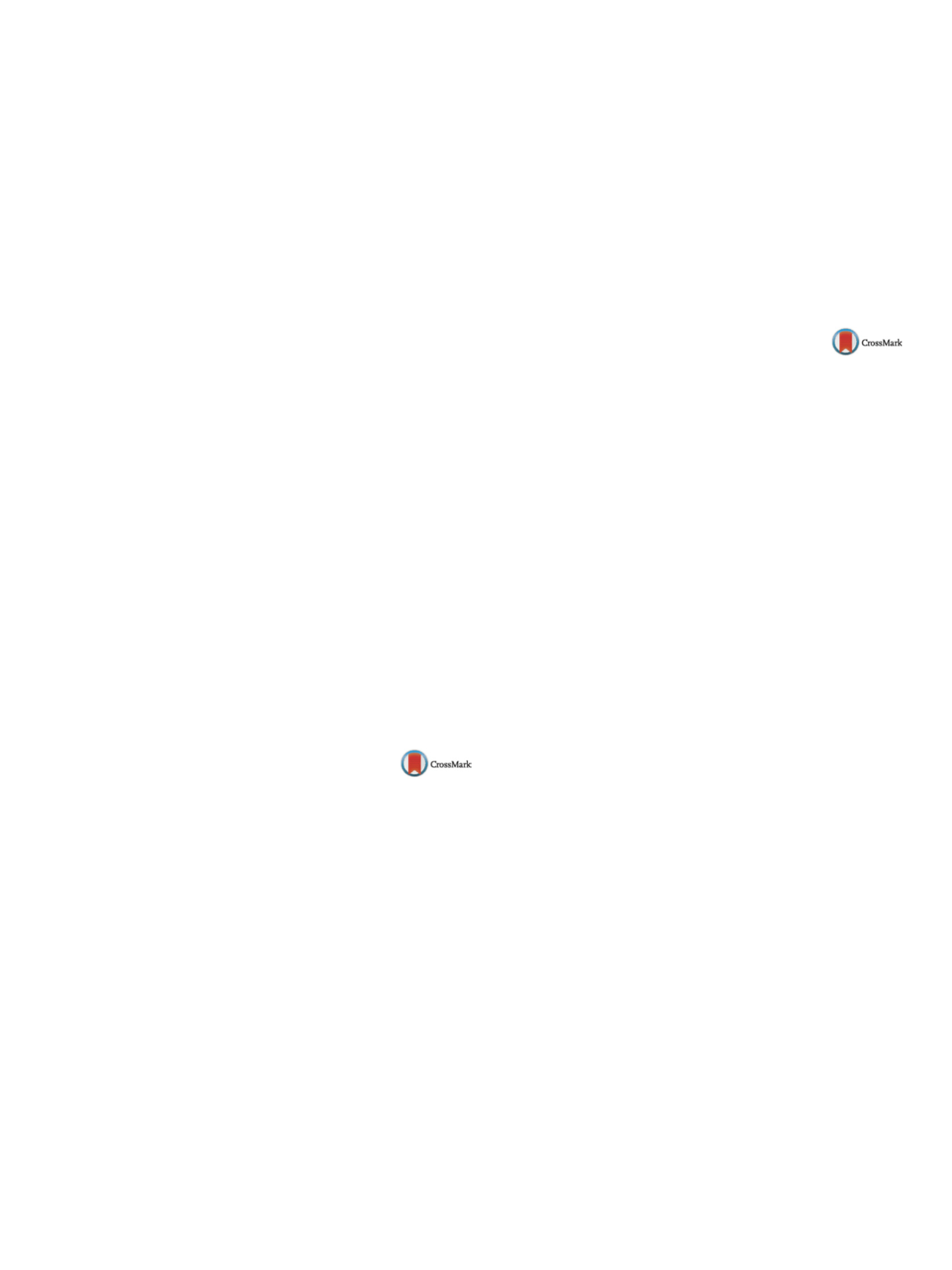

25th European congress of psychiatry / European Psychiatry 41S (2017) S365–S404
S397
2
Haydarpasa Numune Research and Training Hospital, Psychiatry,
Istanbul, Turkey
∗
Corresponding author.
Objective
In this study, it was aimed to determine the internet
use properties of Adult Attention Deficit Hyperactivity Disorder
(ADHD) patients who were followed-up at Haydarpasa Numune
Research and Training Hospital, Psychiatry Department; ADHD
Outpatient Clinic.
Method
Thirty participants who were diagnosed with adult
ADHD aged between 18–31 years rated their ADHD symptoms
in childhood retrospectively, using Wender Utah Rating Scale.
Patients rated current adult ADHD symptoms with the Adult ADHD
DSM-IV-Based Diagnostic Screening and Rating Scale (DSRS) and
severity of symptoms measured by Adult ADHD Self-Report Scale
(ASRS). Internet addiction (IA) was assessed with Young’s Inter-
net Addiction Scale (IAS). It was determined that, none of 30 Adult
ADHD patients have been diagnosed with IA.29 of patient have
moderate internet use although 1 of patients have risky inter-
net use. The results revealed that total ASRS score (
P
= 0.020),
total Adult ADHD DSM-IV-Based DSRS score (
P
= 0.036) and the
Attention Deficit related properties subscale total score (
P
= 0.042)
were significantly correlated with the IAS total score. Subscale
of the self-report scales including; failing to finish schoolworks,
chores, or duties at workplace, difficulty of following through on
instructions (
P
= 0.017), restiveness; impaired inhibitory perfor-
mance (
P
= 0.017), feeling not confident (
P
= 0.017), difficulty of
managing time (
P
= 0.047), failing to give close attention to details
or making careless mistakes (
P
= 0.037) are closely relevant to IAS
total score.
Result
In conclusion, clinical features, which are characteristic of
Adult ADHD could have same shared etiologywith IA. Furthermore,
ADHD patients are more likely to have an IA diagnosis. However,
it was thought that this result had to be supported with studies
including larger samples.
Keywords
Adult ADHD; Internet; Addiction
Disclosure of interest
The authors have not supplied their decla-
ration of competing interest.
http://dx.doi.org/10.1016/j.eurpsy.2017.02.457EW0844
Internet addiction and impulsivity
among university students
B.Ö. Ünsalver
1 ,∗
, H. Aktepe
21
Uskudar University, Medical Documentation and Secretariat,
˙Istanbul, Turkey
2
Uskudar University, Psychology, ˙Istanbul, Turkey
∗
Corresponding author.
Introduction
The progress in technology adds to the new ways
of communication between people. In our age, online communi-
cation has taken the place of face to face communication. People
express themselves, become friends and in a way become who they
are through the tools of social media. Many biological and psycho-
logical factors may affect the choice of people for communicating
through social media.
Objective
Main objective of this research is to measure the fre-
quency of Internet addiction and it’s relationship to social media
use and impulsivity.
Methods
The population of the study is composed of 117 female
(58.5%) and 83 male (41.5%) students between 18–25 years of age
from Uskudar University. Barratt Impulsivity Scale and Internet
Addiction Scale were used for data collection and measurement
of variables.
Results
Among the participants, 97.5% were found to go online
everyday. Among the participants, 74.5% went online for social
media use. Only 5% of the subjects fitted the criteria for Internet
addiction. Thirty-six percent had limited symptoms for Inter-
net addiction. Internet addiction symptoms and impulsivity were
positively related. The tool for Internet access did not affect
Internet addiction. Those who used a smart phone went online
for social media use more commonly than those who used a
computer.
Conclusion
It has been debated that social media and the increase
in smart phone use may be affecting young people and increase
internet addiction rates, however we have found that impulsivity
is an important factor for internet addiction as in other types of
addiction.
Disclosure of interest
The authors have not supplied their decla-
ration of competing interest.
http://dx.doi.org/10.1016/j.eurpsy.2017.02.458EW0845
Cognitive-behavioral therapy in
young adults with major depression
and alcohol dependence
D. Vasile
∗
, O. Vasiliu
Central University and Emergency Military Hospital “Dr. Carol
Davila”, Psychiatry, Bucharest, Romania
∗
Corresponding author.
Background
Adolescents and young adults are a vulnerable popu-
lation to both alcohol use disorders and depressive major disorder.
Use of cognitive-behavioral therapy (CBT) could help in diminish-
ing depressive symptoms severity as well as alcohol dependence
severity.
Objective
To evaluate CBT efficacy in young adults diagnosed
with major depressive disorder and alcohol dependence.
Methods
A number of 12 patients, age 23–35, 7 male and
5 female, outpatients, diagnosed with alcohol dependence and
major depressive disorder, moderate or mild episodes, accord-
ing to ICD-10 criteria, were included in a 3 months CBT oriented
program. All subjects were evaluated using a Visual Analogic
Scale (VAS) for self-evaluation of alcohol problems severity (score
ranging from 0 – absent to 10 – extremely severe), AUDIT
scale, Hamilton Depression Rating Scale (HDRS) – 17 items, and
Global Assessment of Functioning (GAF). Patients participated in
30minutes individual CBT sessions, twice per week, for 12 weeks.
Cognitive restructuring based on patients’ diary, coping skills
training, and activation techniques have been applied in the CBT
sessions.
Results
After 12 weeks all patients reported decreases on VAS
and AUDIT scores, with mean percentages of 55 and 50, while
GAF increased with 45%. HDRS scores decreased with 65%. These
changes were considered significant when compared to initial val-
ues (
P
= 0.007 for VAS,
P
= 0.009 for AUDIT,
P
= 0.012 for GAF and
P
< 0.001 for HDRS), according to dependent samples
t
-test
P
< 0.05,
bivariate.
Conclusion
Cognitive-behavioral therapy, focused on cognitive
restructuring, coping skills training, and activating techniques is an
efficacious intervention in young patients with comorbid depres-
sive and alcohol dependence.
Disclosure of interest
The presenting author was speaker for
Astra Zeneca, Bristol-Myers Squibb, CSC Pharmaceuticals, Eli Lilly,
Janssen-Cilag, Lundbeck, Organon, Pfizer, Servier, Sanofi Aventis
and participated in clinical research funded by Janssen-Cilag,
Astra Zeneca, Eli Lilly, Sanofi Aventis, Schering Plough, Organon,
Bioline Rx, Forenap, Wyeth, Otsuka Pharmaceuticals, Dainippon
Sumitomo, Servier.
The other author has not supplied his/her declaration of competing
interest.
http://dx.doi.org/10.1016/j.eurpsy.2017.02.459

















